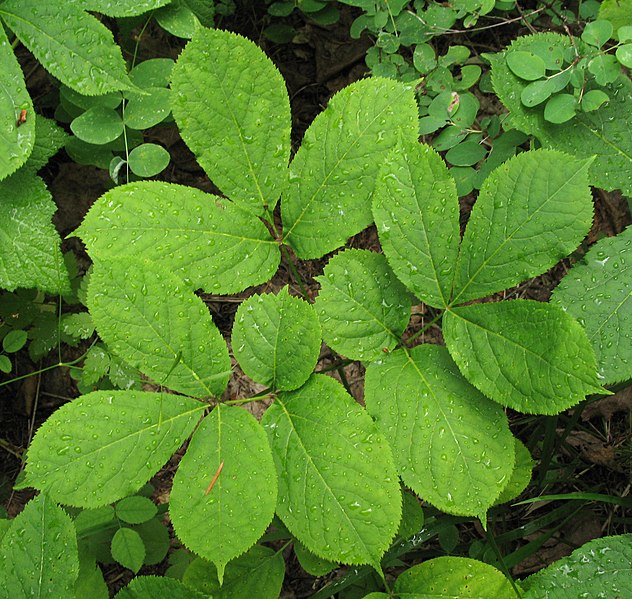Wild Sarsaparilla Identification – Aralia nudicaulis
Heads up
Wild Sarsaparilla is its most common name, but some might refer to it simply by its genus, “Aralia.” This unique plant belongs to the Araliaceae family, which is often linked with Ginseng because of shared characteristics.
Wild Sarsaparilla: Key Parts in Photos




Where to find it
If you’re on the hunt for the Wild Sarsaparilla, here’s a clue to find it: venture into woods where the soil is moderately wet, but not waterlogged. This plant loves partial to full shade. Essentially, it’s a woodland dweller that likes to keep its feet damp but not soaked.
How to identify Wild Sarsaparilla
This plant has a neat way of showing off its flowers. Between May and June, you’ll see round clusters up to 2 inches across, filled with tiny stalked flowers. These flowers are white, sometimes with a greenish tint. Each flower has 5 delicate petals. In the center, protruding out, you’ll notice 5 white-tipped stamens. Here’s an interesting bit: while many plants have their flowers growing alongside their leaves, the Wild Sarsaparilla is a bit different. It usually has about 3 of these flower clusters branching off a stem that doesn’t have any leaves on it. This stem comes straight from the plant’s base.
Let’s talk about its leaves, a defining feature of the Wild Sarsaparilla. Each plant generally has a single leaf that seems to emerge from the ground, and at its tip, there’s a bunch of 3 compound leaves (a group of smaller leaflets attached to a single stem). These leaflets are typically 3 to 5 inches long, and their shape is somewhere between an oval and a shape that’s widest in the middle. The leaflets have finely toothed edges, and they might be a tad wavy. Both the leaf and the flowering stem are smooth without any hair and grow from the rhizome (a kind of underground stem).
As time moves forward and summer progresses, those white flowers will turn into fruit. The Wild Sarsaparilla fruit is a berry, technically called a drupe in botany. Starting as a green tiny ball, this fruit will mature into a dark purple delight. It’s a transition that not only marks the progression of seasons but also adds a different kind of beauty to this woodland plant.
